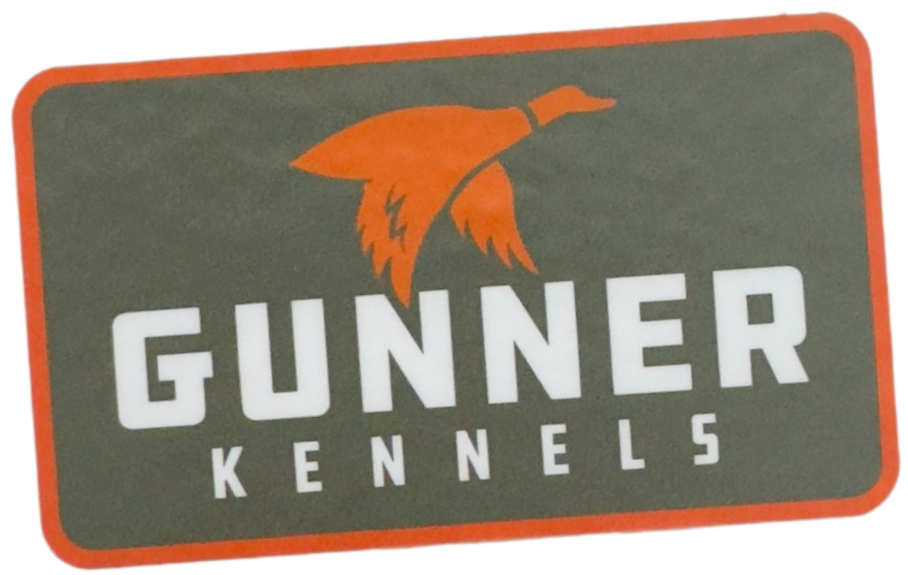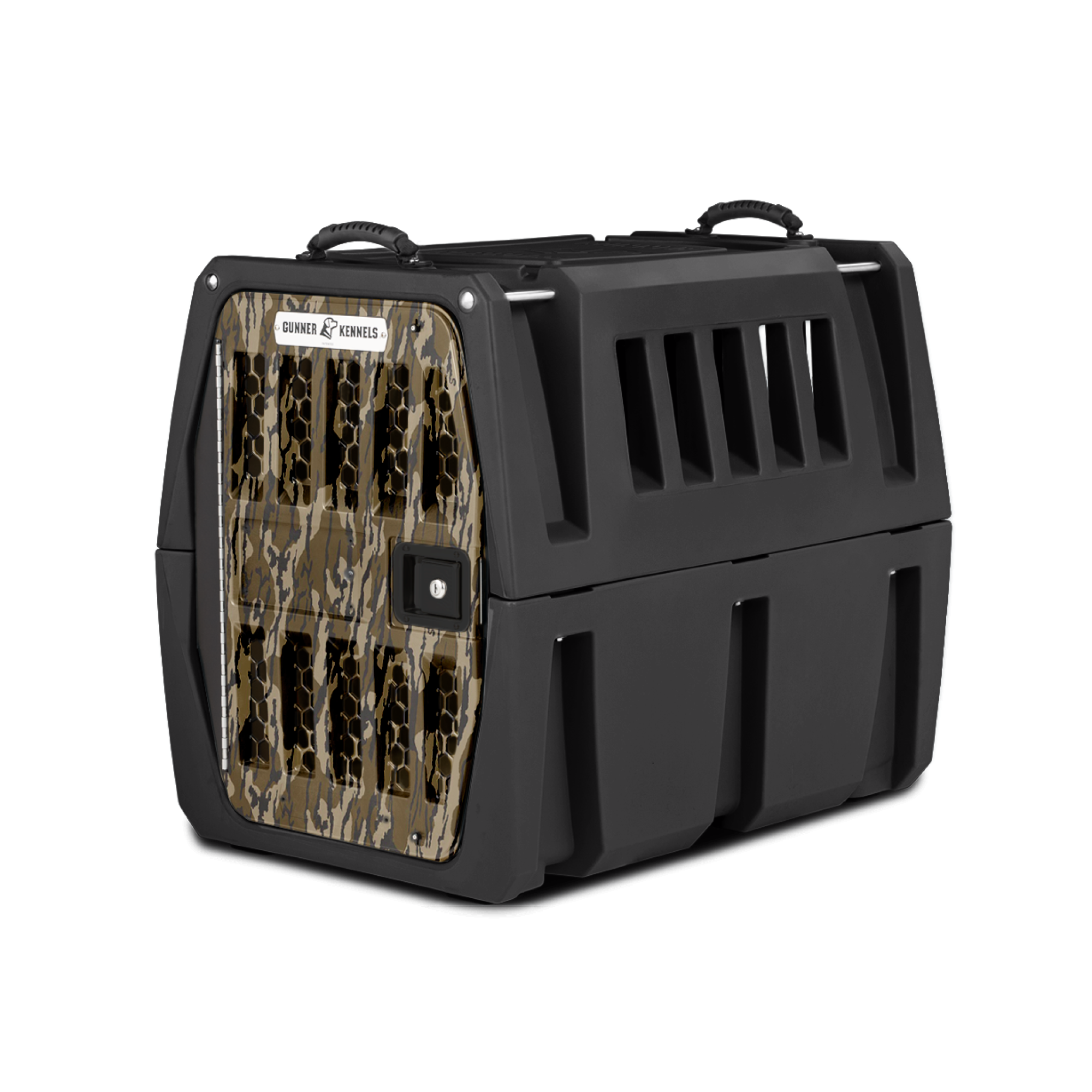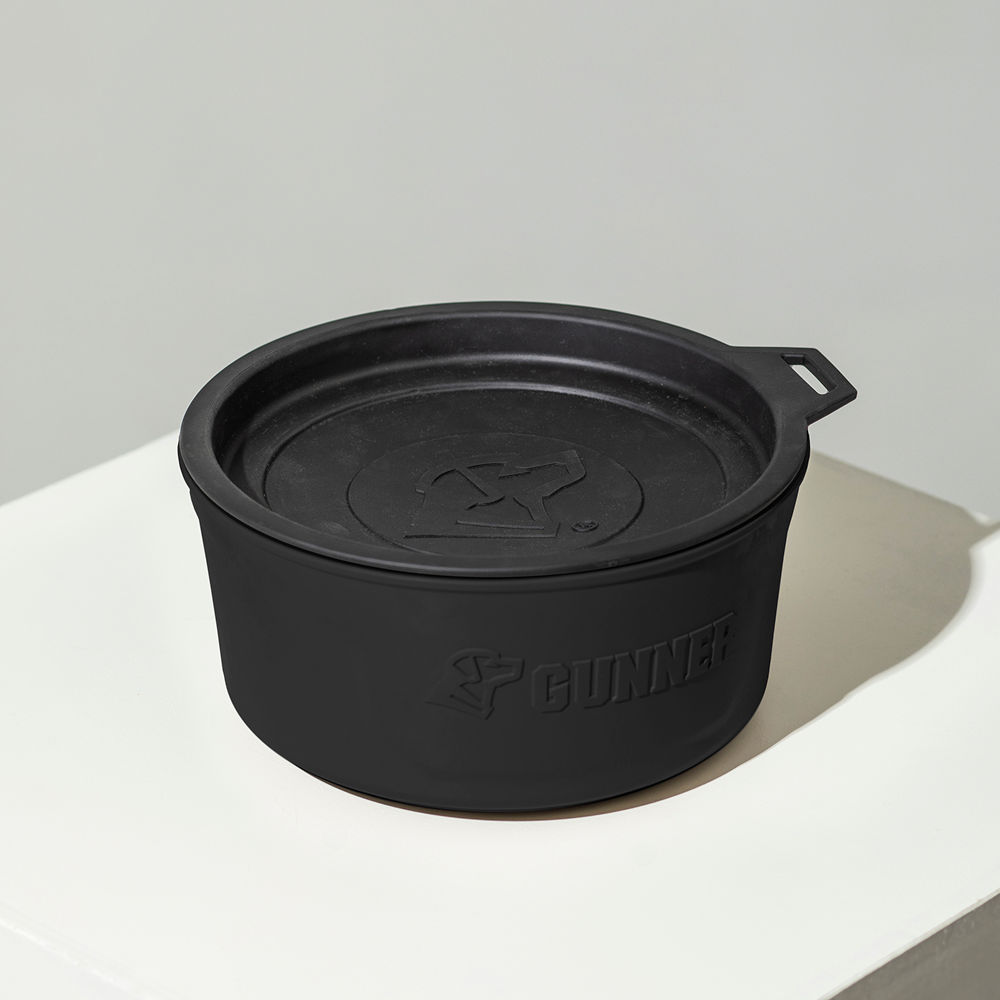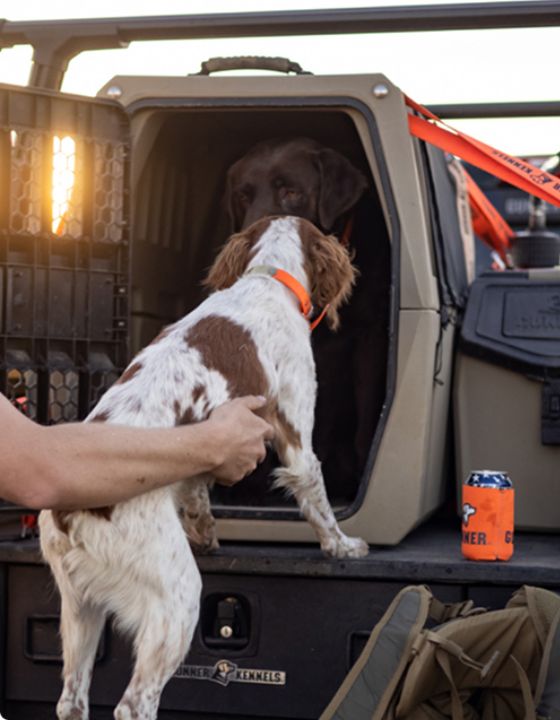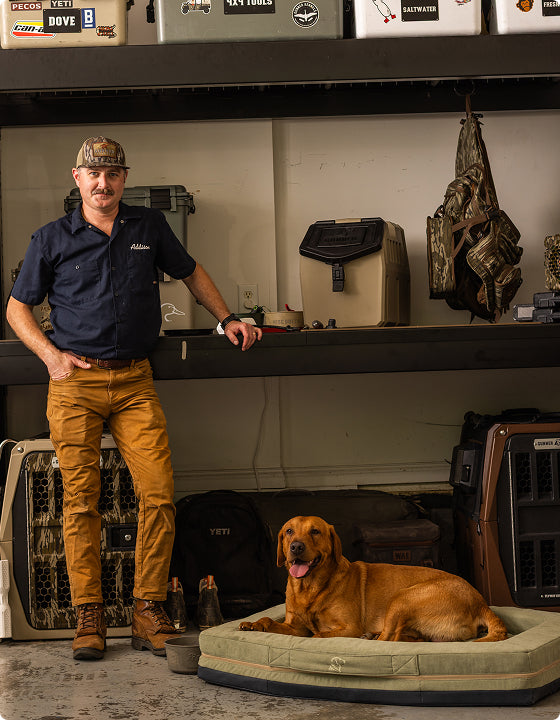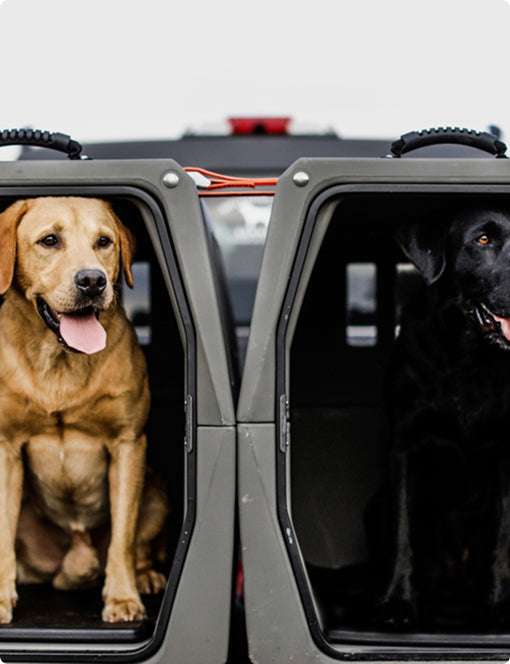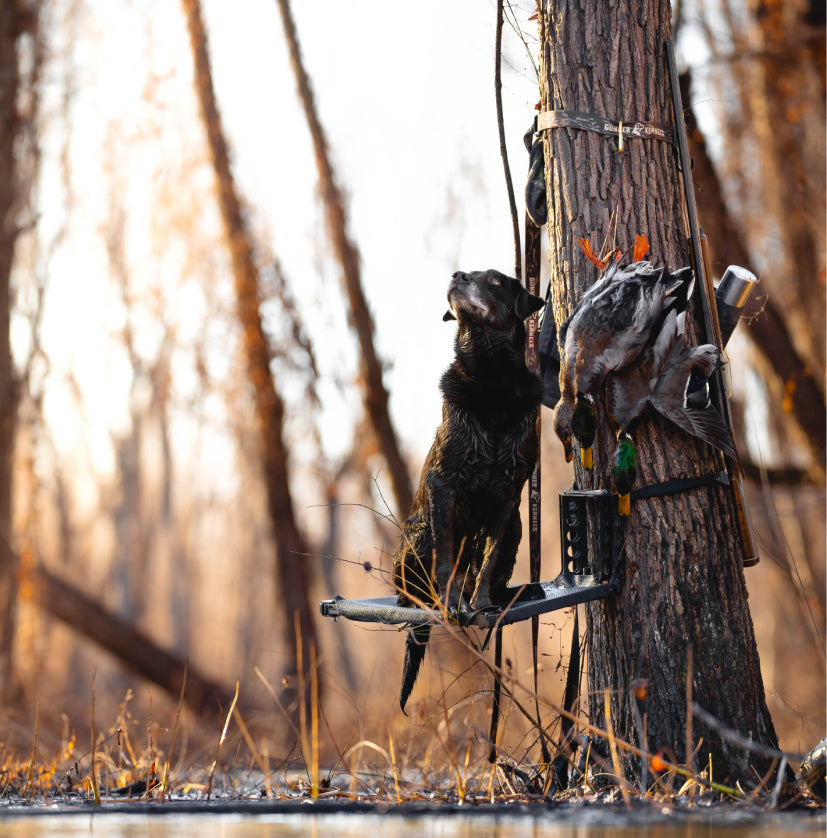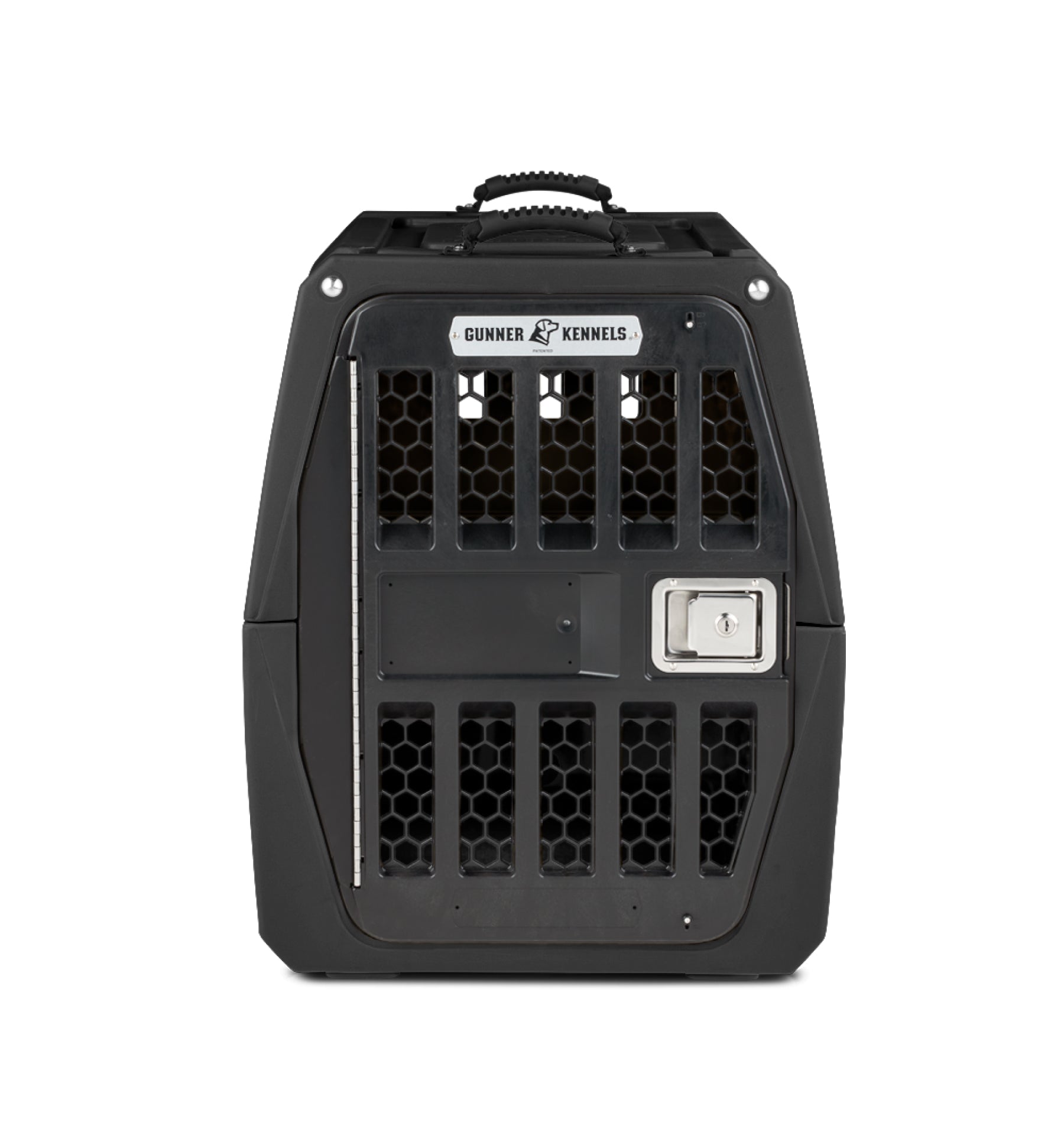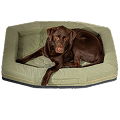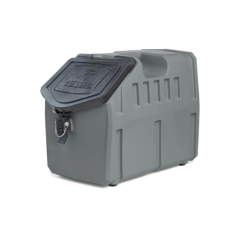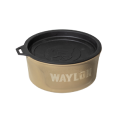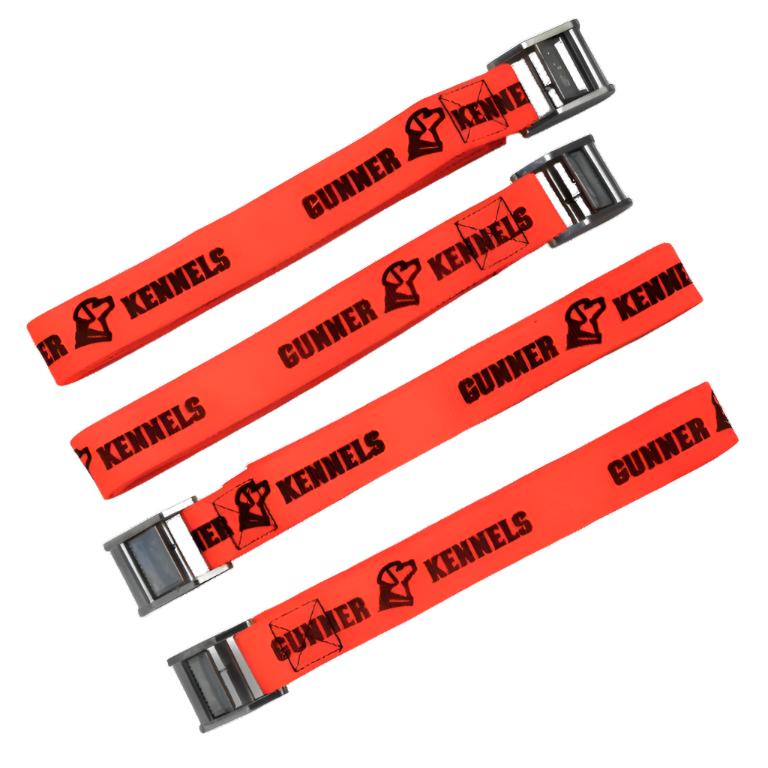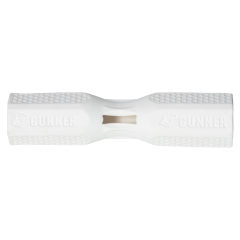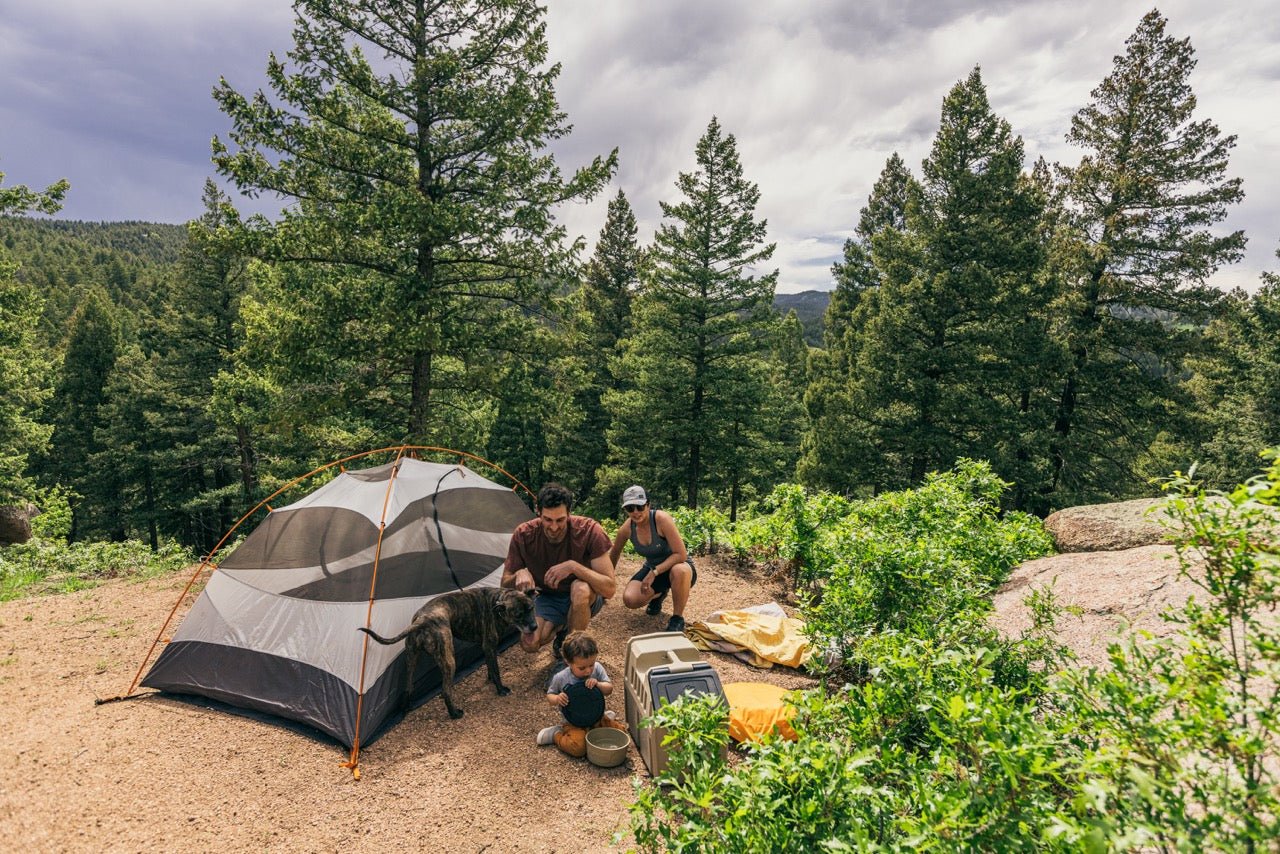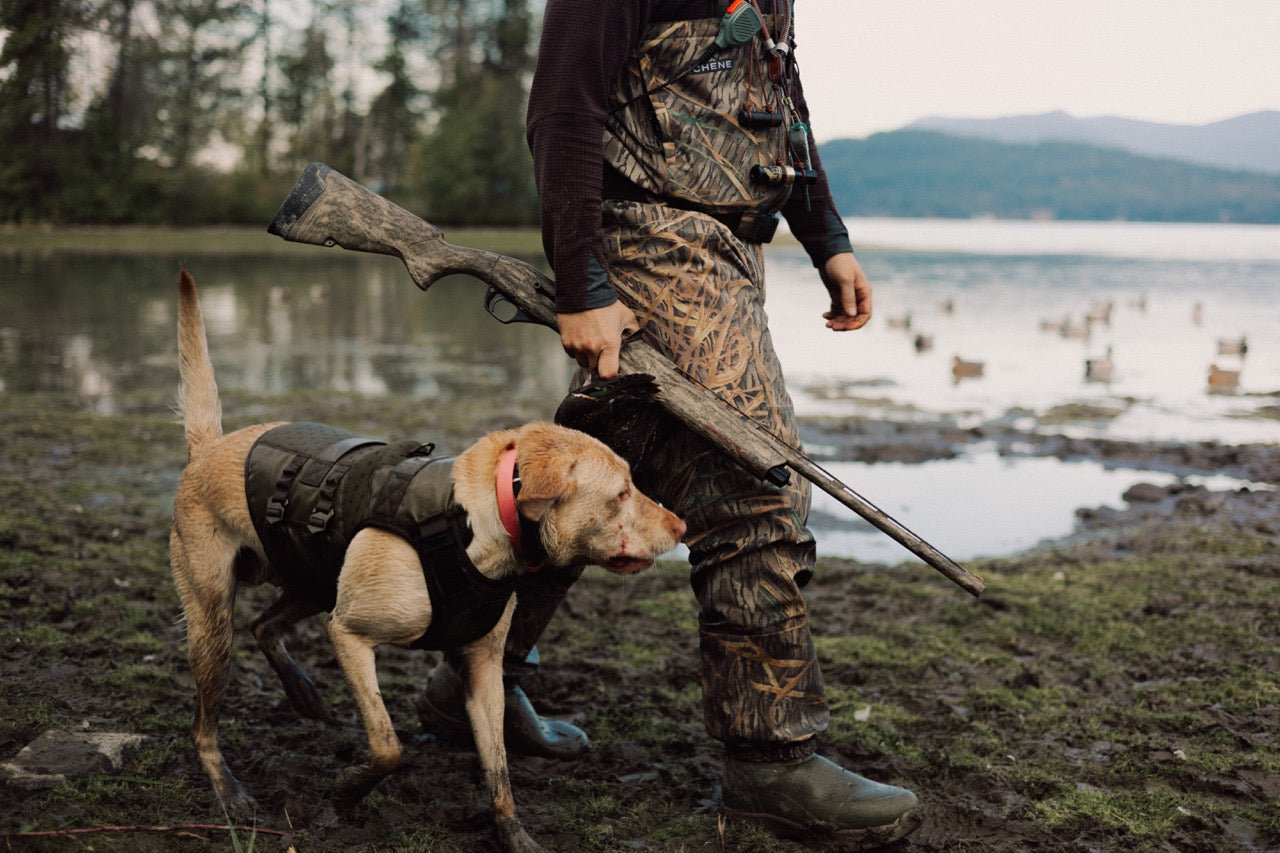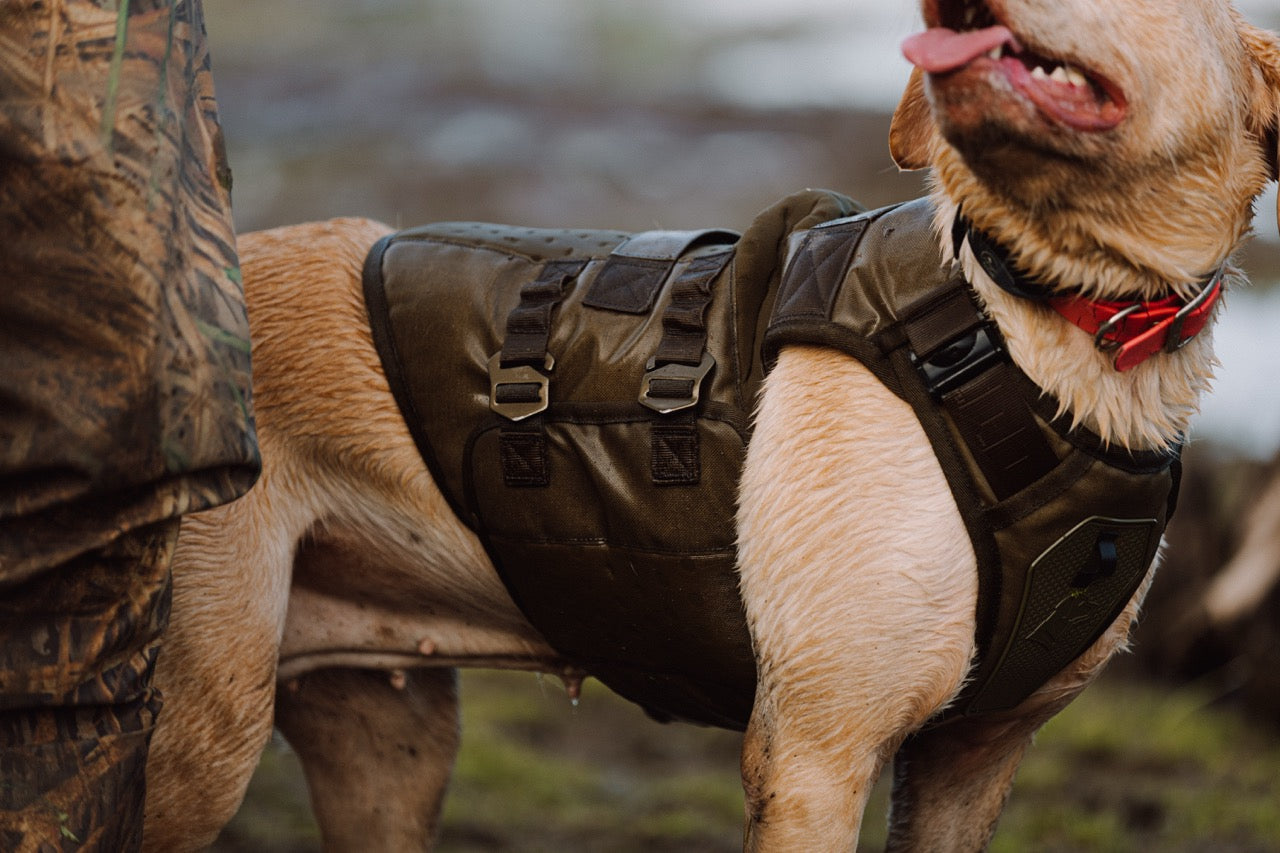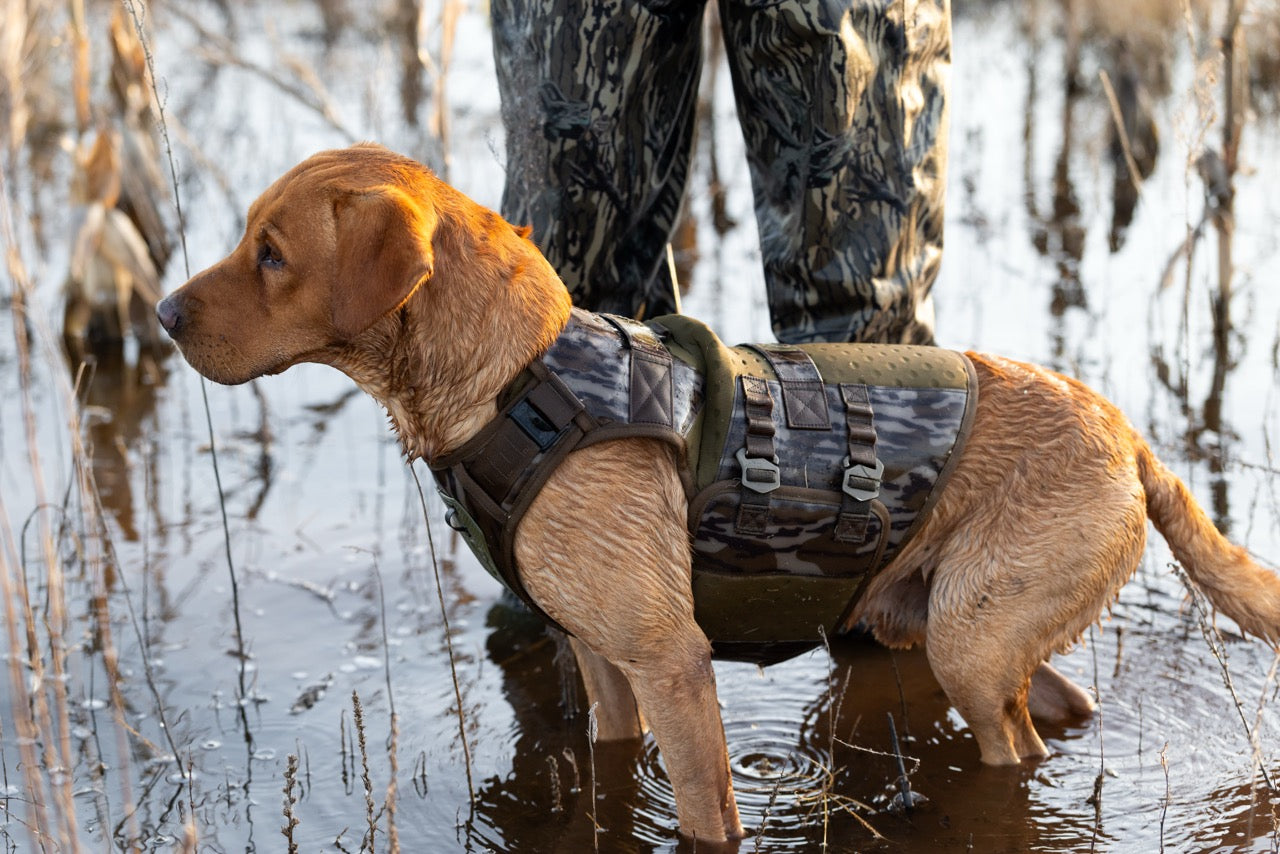With June being National Camping Month, it brought back memories of college float trips on Mississippi’s Little Tallahatchie River.
We would pack up our dogs Goose and Gunner for the weekend, catching anything that would bite and making a place along the bank when it got dark. If you’re one of the lucky ones making plans for camping this summer, here are a few basic tips for keeping dogs safe when they ride along.
Command
Whether you’re bringing your dog to an official campsite, going hiking off-leash (that’s another topic for another day), or taking it off-the-map like we like to do, it’s vital that your dog is trained to respond to commands – both for their safety, and so they aren’t obnoxious to others. Here we talked about the first thing you should teach your dog: name recognition, and reliable recall. Making sure your dog will stay, and responding to “leave it” is important too – you don’t know what your dog will pick up along the way (or in our case, snakes that Gunner would think was a stick).
Condition
If hiking and/or swimming is in the cards on your outdoors trip, make sure your dog is in the proper shape to do what you’re planning. If you’re not spending time working or exercising him, don’t expect him to be able to keep up, especially if it’s a non-working breed. The good thing is your dog will tell you when he has had enough – excessive panting, lethargy or coughing are signs – just make sure you’re listening.
Weather
It’s heat we’re worried about this time of year. Plan your hike or trip around water. We wrote a whole post on keeping your dog cool that is applicable. If the temps drop at night where you’re camping, bring an extra blanket for the pup.
Dangers
No matter where you’re going, there’s probably going to be a potential predator – bears and snakes for all dogs, and mountain lions, coyotes and big birds for smaller dogs. Use common sense: lock up your food in an airtight container, keep your dog close by or on a leash, and be aware of your surroundings. Things happen, and you never know what a dog will eat along the way. Have a plan mapped out if the worst happens, and your dog needs immediate attention.
Prevention
Apply flea and tick preventives, and see that your heartworm medication is up to date. Coconut oil on the fur acts as a natural repellent to bugs if you’re worried about mosquitoes. Check for ticks, and anything else caught in the fur. And make sure your dog’s collar has the standard ID.
Supplies
✓ Your Gunner Kennel (you’ve got to get from point A to point B, right?) ✓ Clean water ✓ Water purifier (dogs need clean water too) ✓ Food ✓ Airtight food container (unless you want bears visiting the campsite) ✓ Collapsible or plastic Bowl ✓ Flash light ✓ Collar light ✓ ID tag ✓ Leash or nylon rope (for tethering, if need be) ✓ First aid kit ✓ Rubbing alcohol (in case your dog gets too hot) ✓ Waste bag or small shovel (if on a campsite) ✓ Insect repellant or coconut oil ✓ Blanket or towel (for temp drops)
Tip: If you’re going on a long hike, you may need the dog to carry some of the supplies. You might want to pack a dog pack. We’ve heard a good rule of thumb is that dogs can safely carry up to 25 percent of their own body weight.
These are just the basics. For a more in depth post that goes into specifics, check out Gizmodo’s post here. And you have additional tips, comment with those below!
